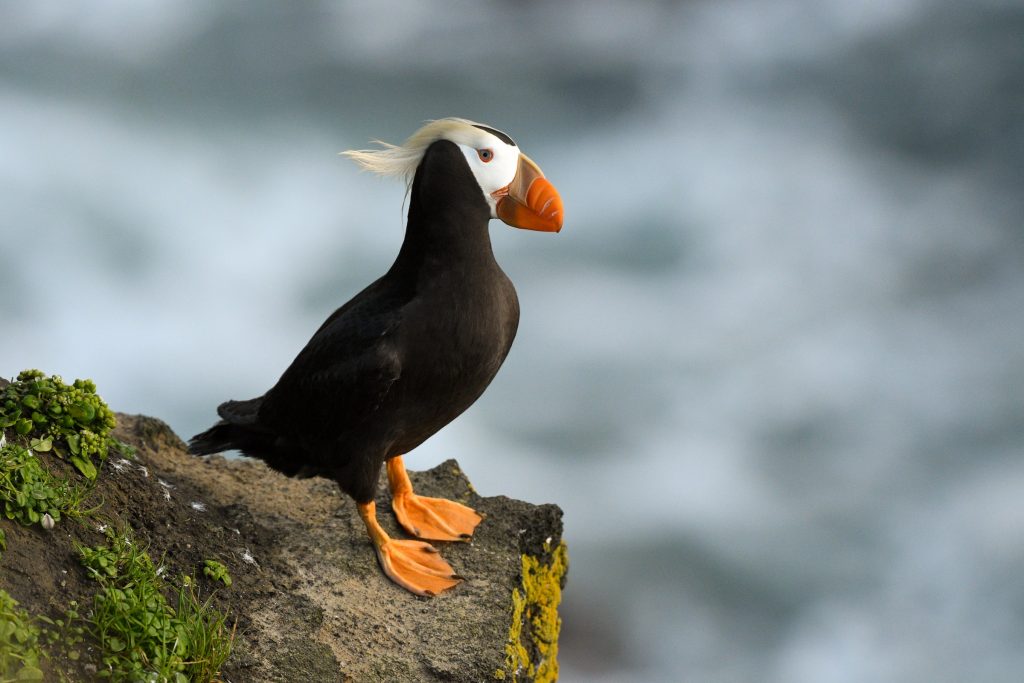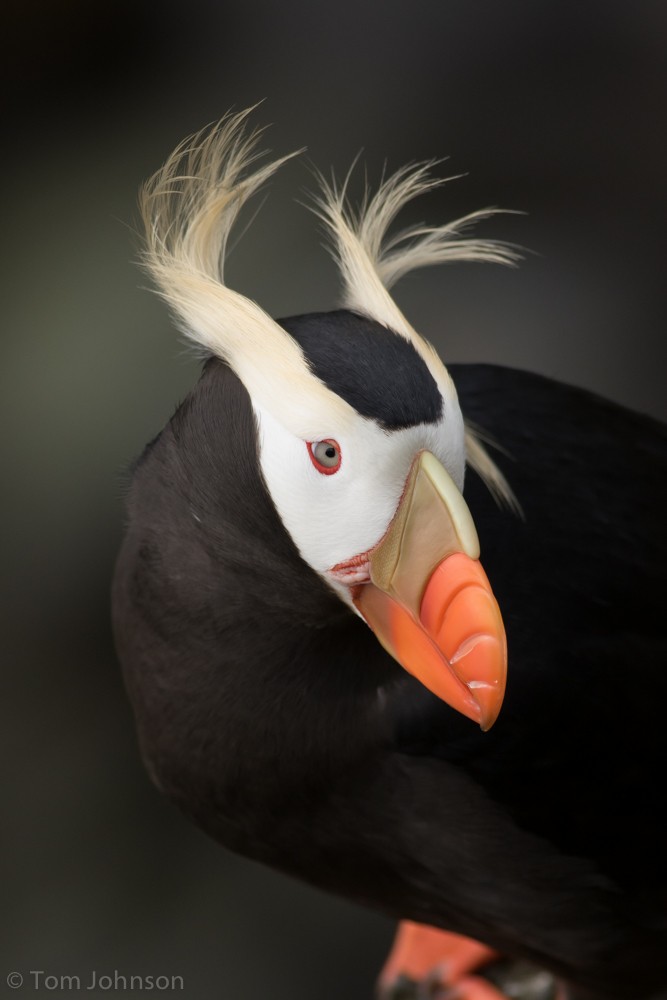This species of puffin tends to arrive at the islands more on par with the other species of alcids, most commonly in late April, though in some years it may not be until the first week of May. This species is more apparent during the spring and early summer than the Horned Puffin (Fratercula corniculata), though it follows a similar yearly pattern as it too is not found in peak numbers until July and August when nesting is at its peak. The nesting population is smaller for this species than the Horned Puffin with an estimate of 2,000-4,000 pairs on St. George Island, 500-1,000 pairs on St. Paul Island, and a small number of pairs on Otter Island. This species remains common around the cliffs until mid-late September when numbers drop off noticeably and are typically only found in small numbers and not regularly after September 25th. It has never been recorded in large numbers after September and likely continues to be found sporadically in small numbers through the rest of the fall and into early winter when ice and weather conditions allow. Small numbers will winter at sea when open water is present in the vicinity of the Pribilofs.
This is quite likely to be the most photogenic species of bird present in the Pribilofs. Tufted Puffins, along with Horned Puffins (Fratercula corniculata), are known for returning to their chicks with many fish and small squid in their beaks. This behavior is best seen during August for both species when the highest numbers of chicks are being attended to.



